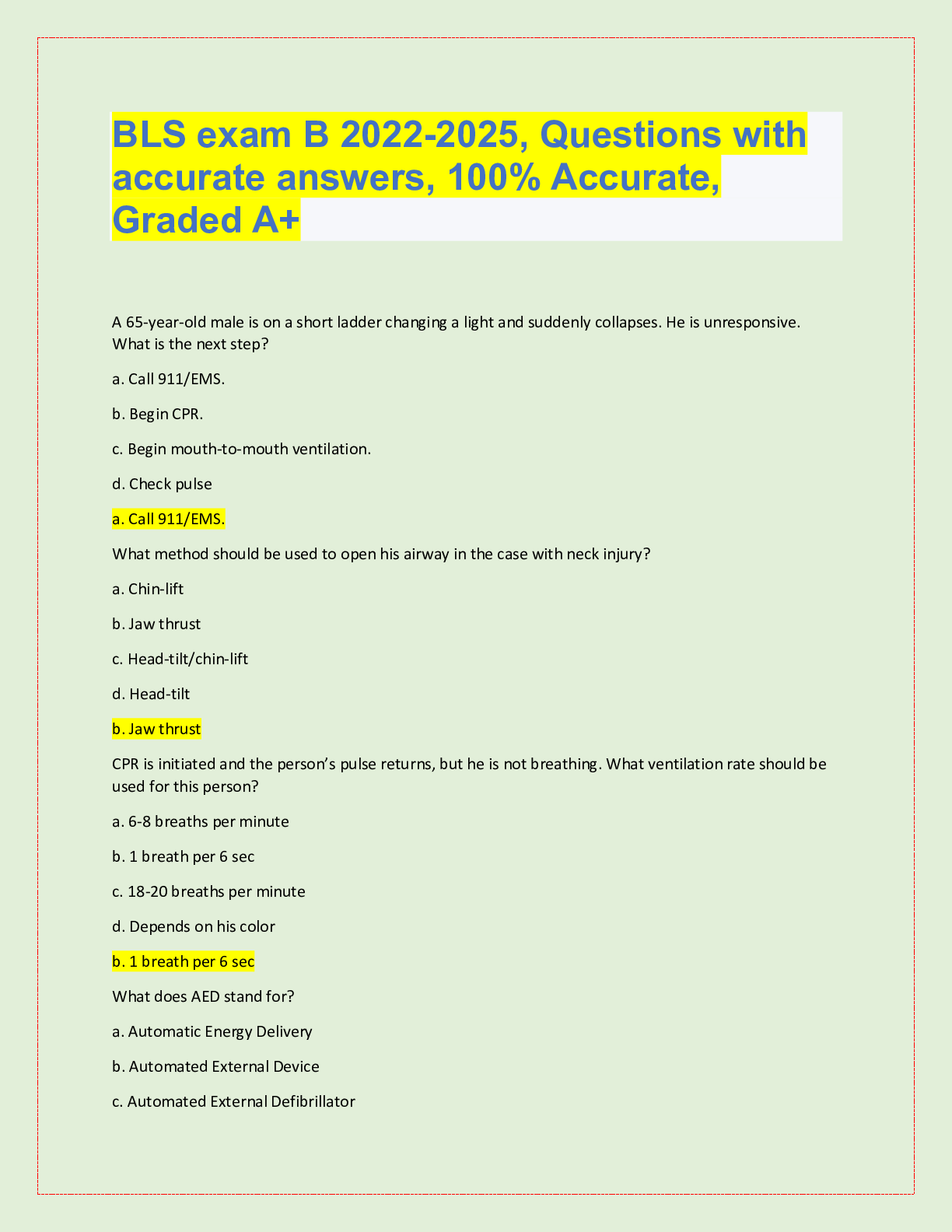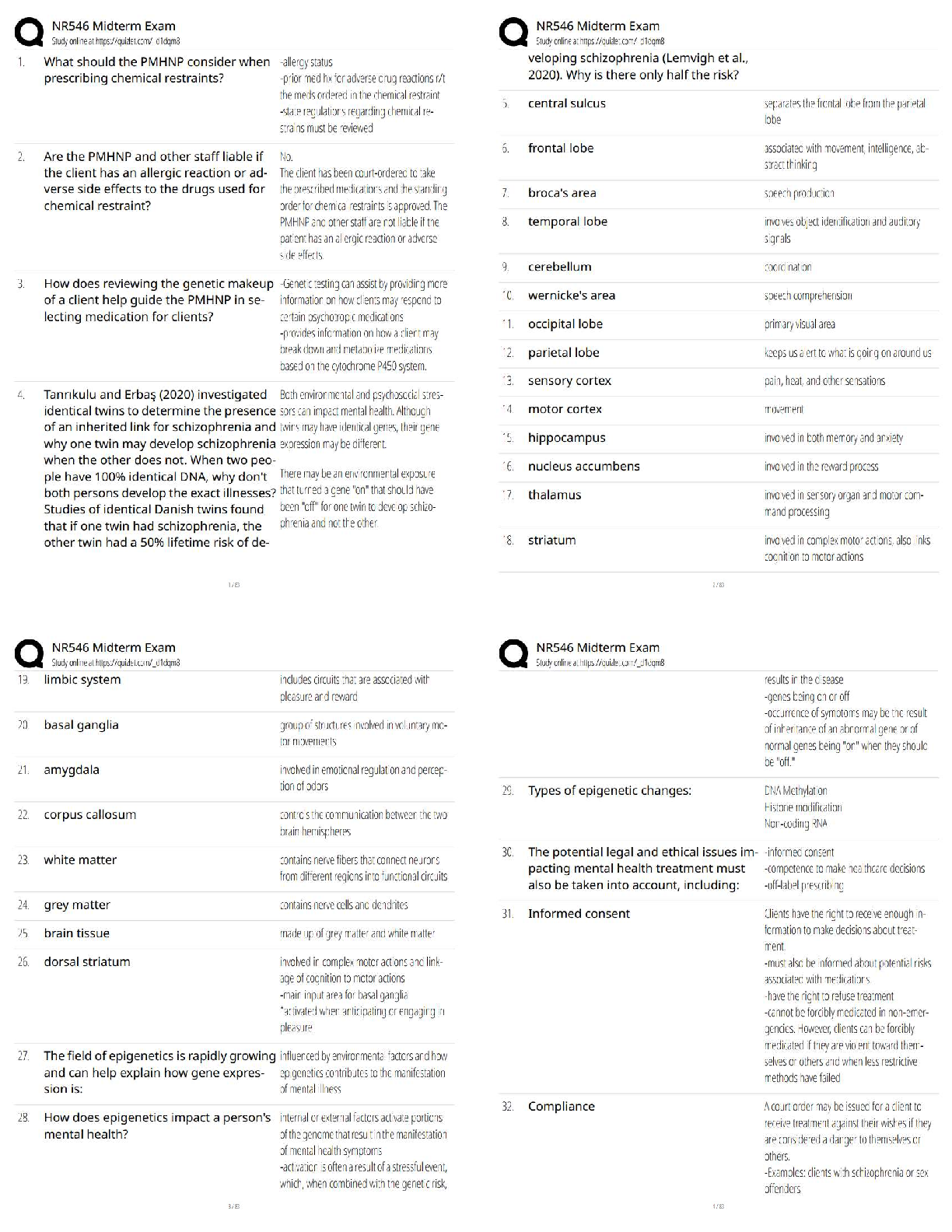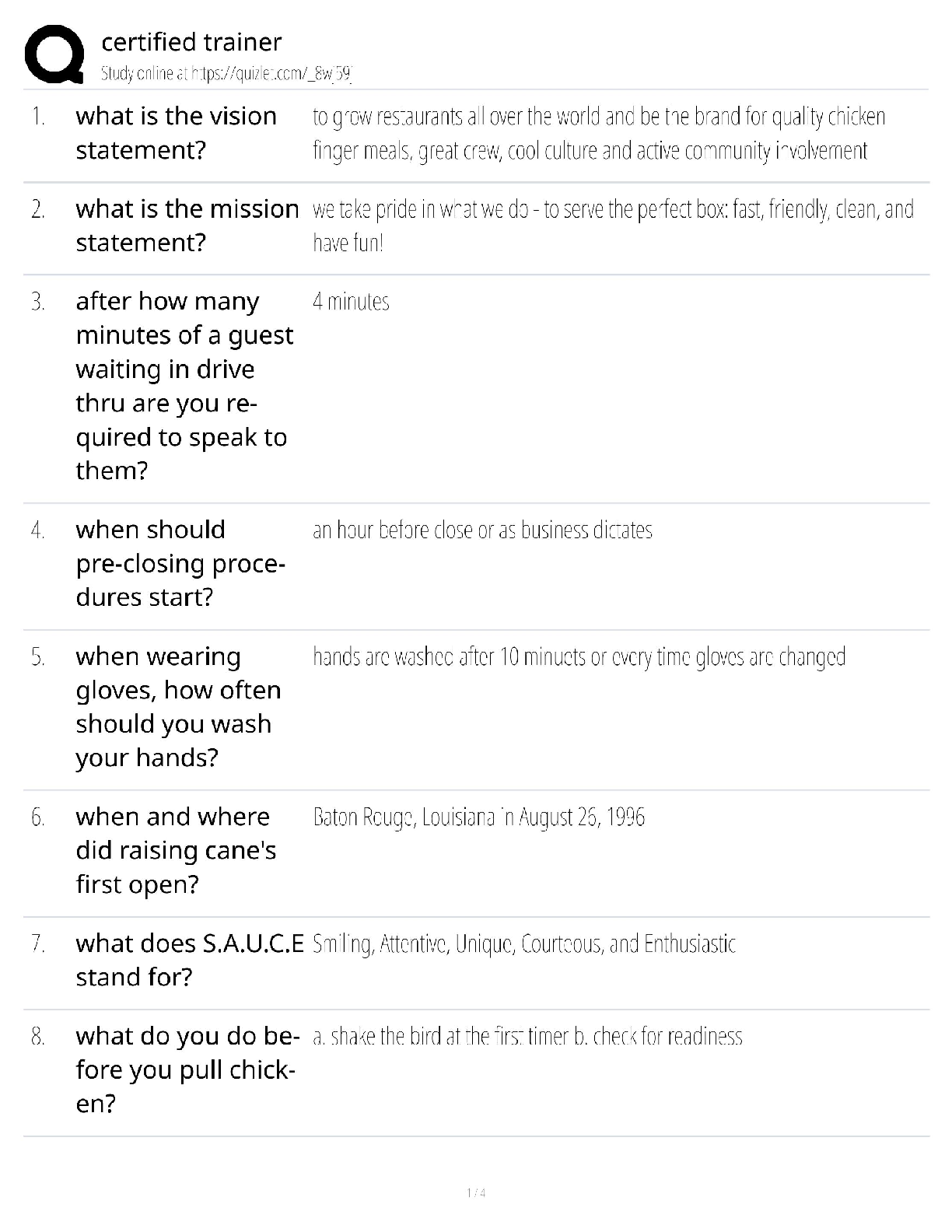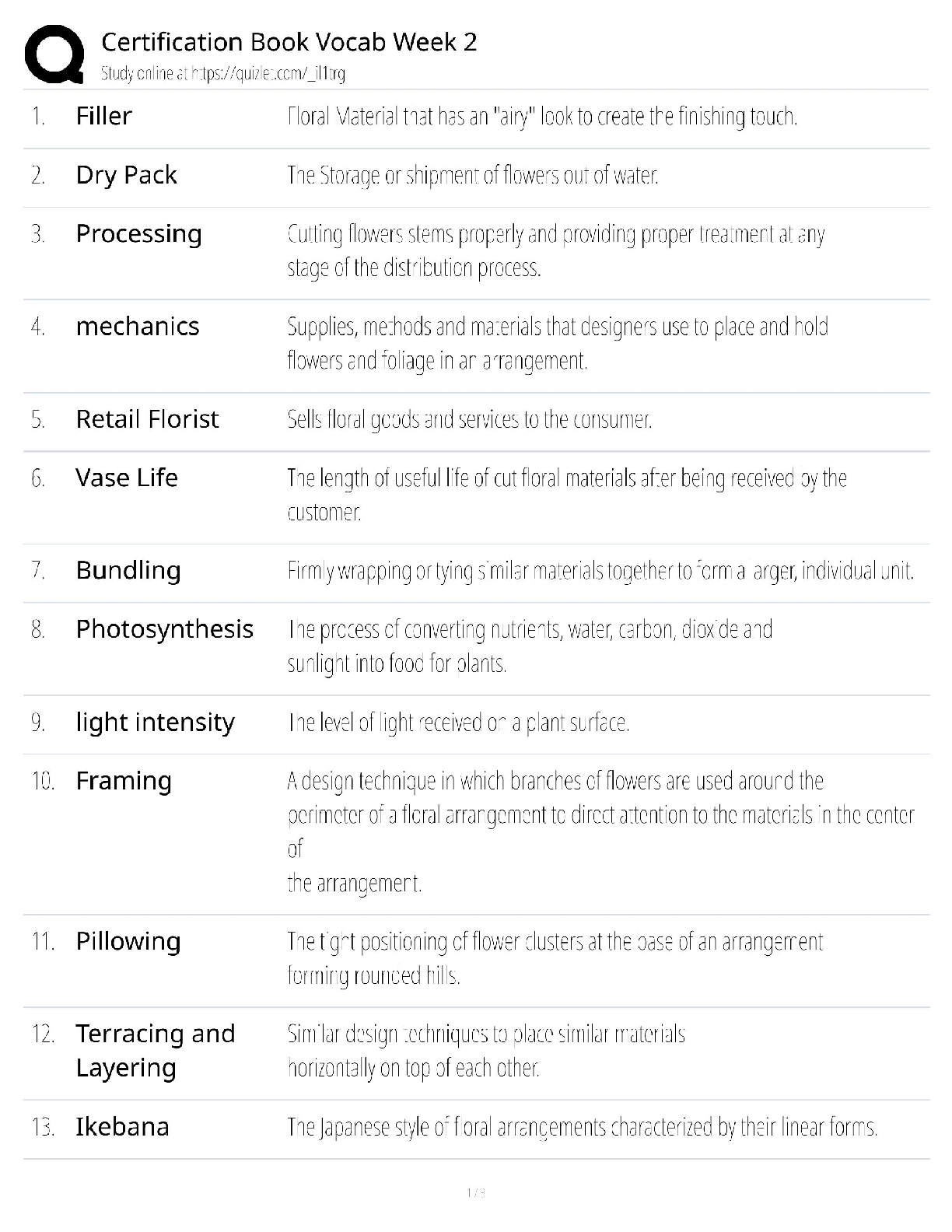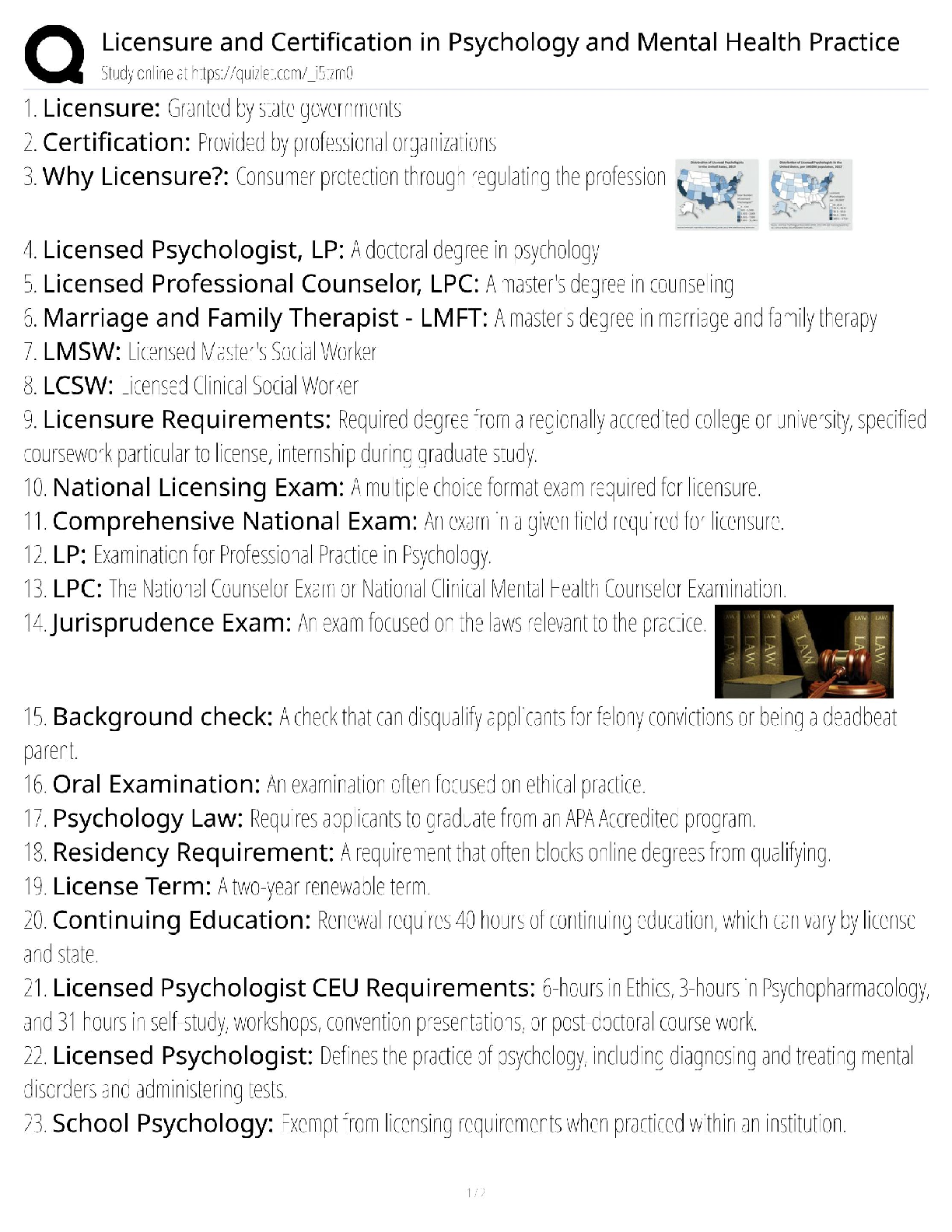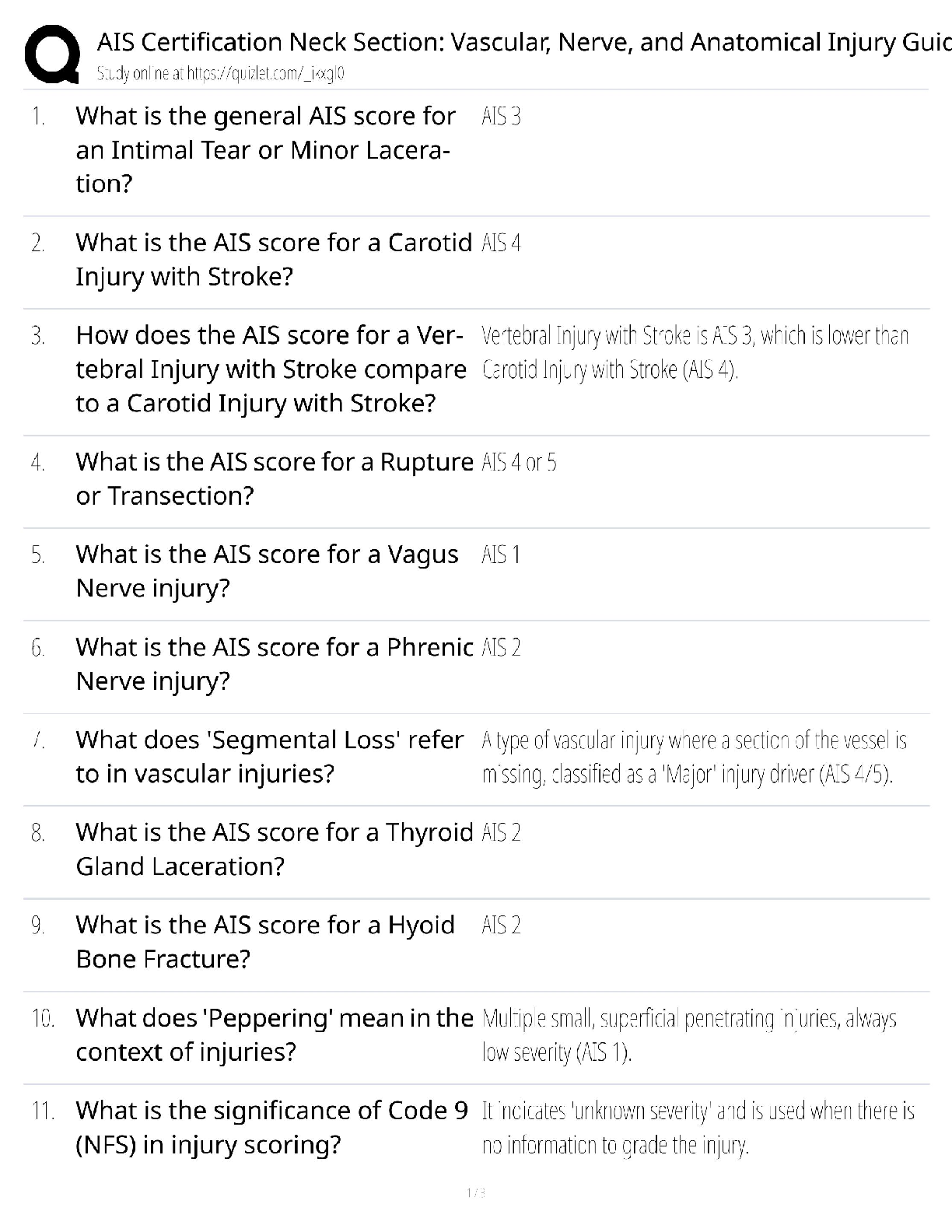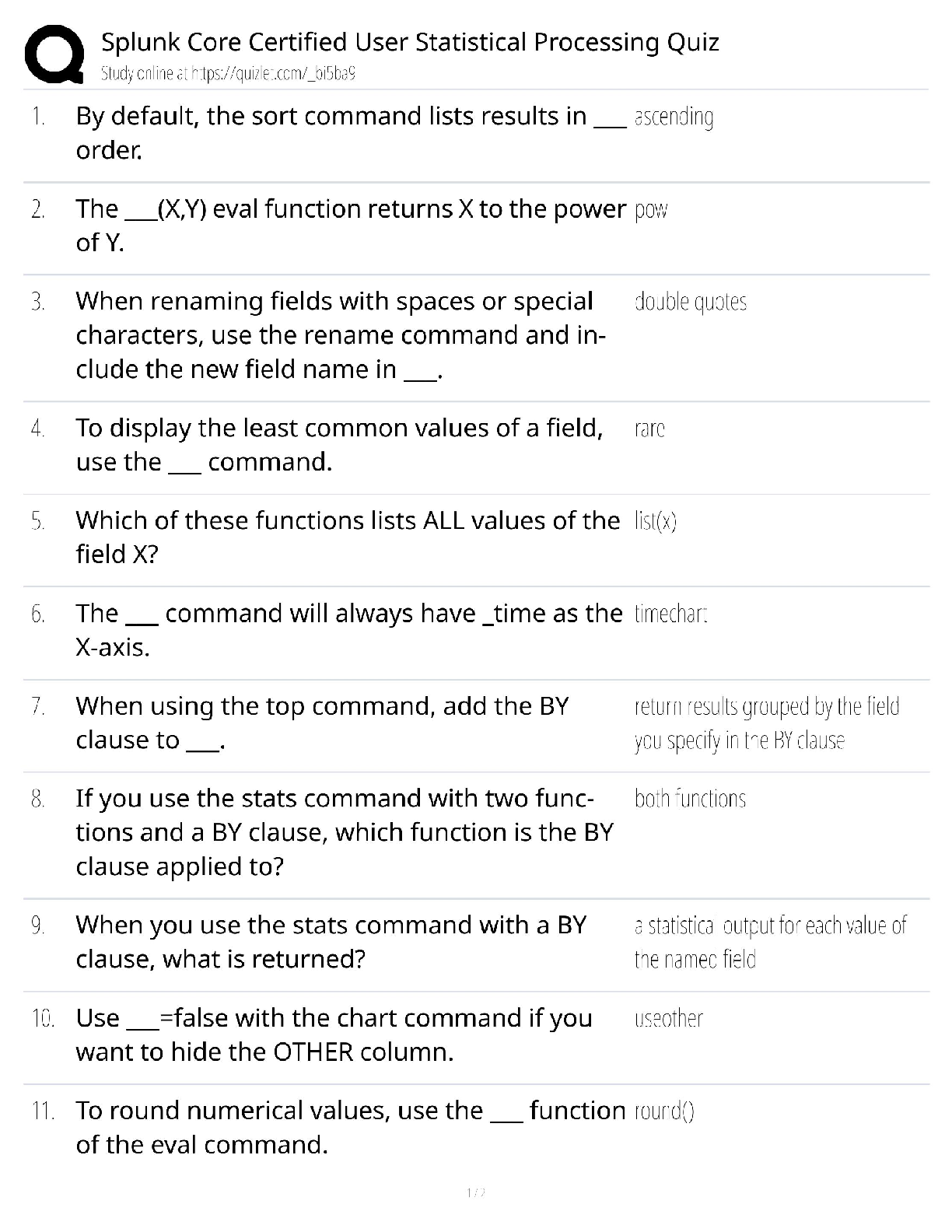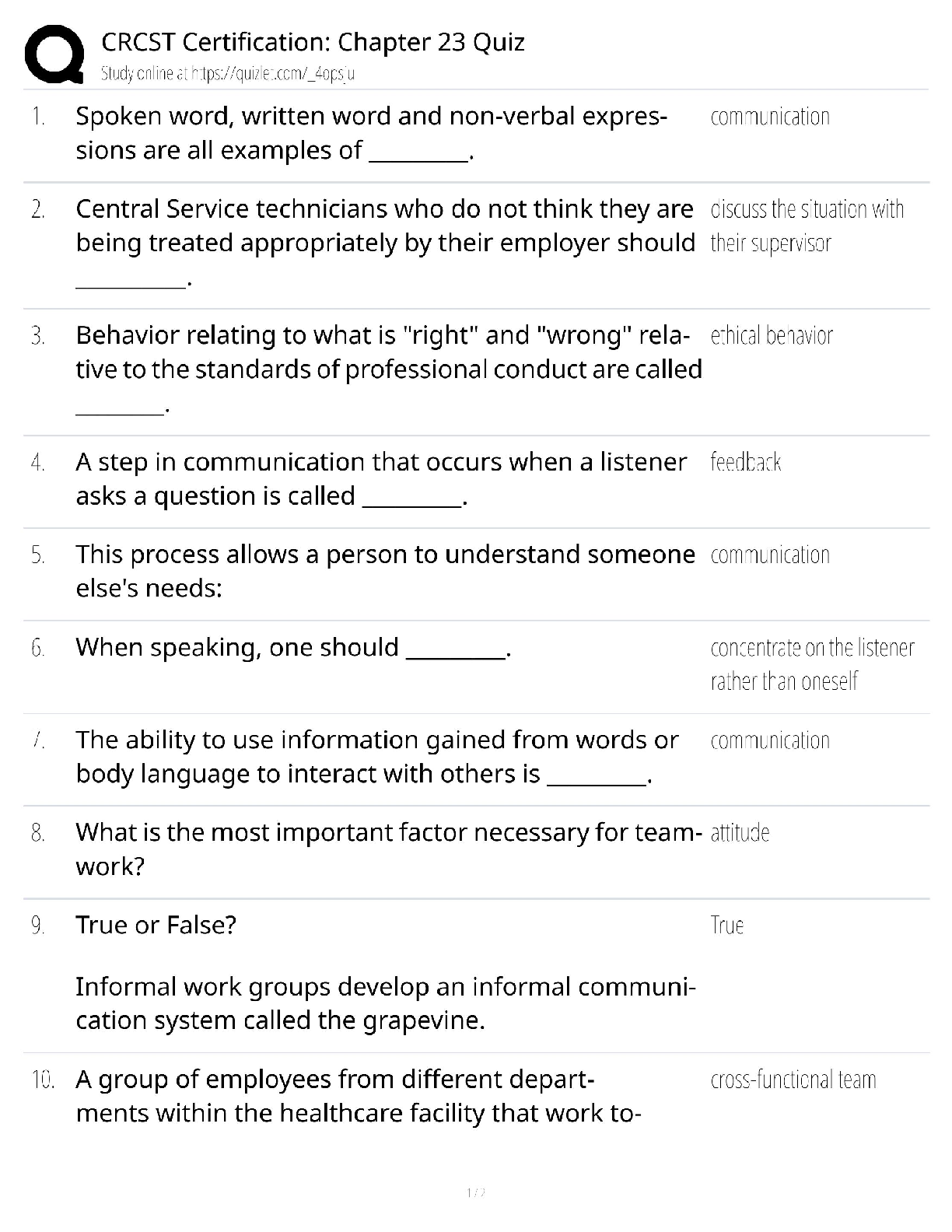Education > QUESTIONS & ANSWERS > Training and Development c235, Top Exam Questions and answers, graded A+, verified. (All)
Training and Development c235, Top Exam Questions and answers, graded A+, verified.
Document Content and Description Below
Training and Development c235, Top Exam Questions and answers, graded A+, verified. Human Capital - ✔✔-The knowledge, competency, and motivation that resides in the HR of an organization B ... uy or Build Decisions - ✔✔-The decision orgs face relating to investments in selecting new employees vs. investments in training and development of current HR Human Resource Management (HRM) - ✔✔-The entire set of activities used by an organization to align its human capitla with organizational objectives and strategies Orientation - ✔✔-First training program a new employee encounters, designed to clarify expectations, policies, and the business model, organization culture, and so forth. Longer versions of this are known as on-boarding Resource-based View (RBV) - ✔✔-A view that envisions organizations as bundles of resources, such as people, capital, plant, and equipment Competitive Advantage - ✔✔-The ability to provide a product or service to a paying customer in a way that cannot be easily matched by a competitor Intangible Resources - ✔✔-As opposed to tangible resources (such as plant and equipment), these resources are difficult to quantify and to copy. Examples include tacit knowledge of employees, informal networking systems, intellectual property, and certain organizational capabilities such as short product development cycle times Human Capital - ✔✔-Examples include tacit knowledge, education and experience, work related know how Social Capital - ✔✔-Examples include corporate culture, management philosophy and practices, coaching/mentoring relationships, and informal networking systems Intellectual Capital - ✔✔-Examples include patents and trade secrets, copyrights, and intellectual property Organizational Capability - ✔✔-Examples include Bringing new products to market quickly, absorb and integrate other cultures in a merger, identify customer needs and respond directly to them, and continuously improve production processes to drive down costs Training - ✔✔-Learning that is planned by the organization and designed so as to further organizational objectives Development - ✔✔-Training that is longer term in focus, designed to help employees prepare for future jobs Learning - ✔✔-A relatively permanent change in knowledge, skills, attitudes, or social behavior resulting from practice or experience Goals of Training - ✔✔-1) Improve Self-Awareness 2) Enhance knowledge and skill levels in one or more areas of expertise 3) Increase the motivation to do the job well ADDIE Model - ✔✔-A common framework for training and development where the five steps in the model are Assessment, Design, Development, Implementation, and Evaluation e-learning - ✔✔-The use of electronic technologies to deliver info and facilitate te development of skils and knowledge Learning Organization - ✔✔-An org that is capable of adapting quickly to changing environment by learning at three levels, individual, team, and organizational Copyright Act of 1976 - ✔✔-The law prohibits the printing, duplication, or distribution or copies of another's literary, artistic, or other creative expressions except under certain circumstances Fair Use - ✔✔-A provision of the Copyright Act that allows the use of copyrights works under certain conditions depending on purpose, nature, percent, amount, and effect on market value Civil Rights Act of 1964 - ✔✔-Law prohibits discrimination in employment practices on the basis of race, color, national origin, religion, and sex Adverse Impact - ✔✔-A substantially different rate of selection in hiring, promotion, or other employment decision, which works to the disadvantage of members of a race, sex, or ethnic group Americans with Disabilities Act (ADA) - ✔✔-A law that states an employer may not discriminate against either an applicant or a current employee because he or she was previously disabled or appears to be disabled Age Discrimination in Employment Act of 1967(IDEA) - ✔✔-Law that prohibits discrimination in employment against persons age 40 and over Globalization - ✔✔-Process of interaction and integration among the people, companies, and governments of different nations, a process driven by international trade and investment and aided by information technology Offshoring - ✔✔-Moving Manufacturing operations outside the boundaries of the home country of a global company Cultural Differences - ✔✔-Differences in country values, as reflected in differenced in individualism, power, distance, uncertainty avoidance, and masculinity Power Distance - ✔✔-The extent to which people in a culture are comfortable with power differences Uncertainty Avoidance - ✔✔-The extent to which members of a culture are comfortable living with uncertainty and ambiguity or whether they structure societal insitutions to reduce such uncertainty Individualism / Collectivism - ✔✔-The extent to which people are expected to take care of themselves and choose their own affiliations. Masculinity / Femininity - ✔✔-The extent to which a culture prefers traditional male values such as competitiveness, assertiveness, ambition, and the accumulation of wealth or more traditional female values such as relationships and quality of life. Baby Boomers - ✔✔-That segment of the population born between 1946 and 1964, nearing retirement and likely to take significant skills and knowledge with them when they leave Psychological Contract - ✔✔-The expectations often unspoken that employees have of employers and vice versa. When expectations match up with contributions on the other side, the psychological contract is sound. Employment Security - ✔✔-As contrasted with job security, here employees skills will be kept current so that if the present employer finds at some time in the future that it cannot afford to keep the employee on its own payroll, his or her job skills will be readily marketable to other organizations Competency - ✔✔-An underlying characteristic of an individual that is casually related to superior performance in a job or situation HR Competency - ✔✔-As defined in the Utah State University competency model, it is a configuration of knowledge, skills, and traits that leads to effective performance in human resource management 4 Cs - ✔✔-Communication skills, collaboration skills, cognitive skills, and consulting skills Training Partnership - ✔✔-Partnership between the HR dept and line managers where both sides are committed to the success of any training efforts CLO / Chief Learning Officer - ✔✔-Strategic position charged with thinking critically about the organization's long term needs for talent and how best to position the training and development process withing the broader framework of the organization's capabilities to fulfill customer needs and fend off potential customer needs and fend off potential competitive rivals Strategic Training - ✔✔-The idea that all training should be aimed at building organizational capabilities that foster sustained competitive advantage Needs Assessment - ✔✔-A step in the training process that is designed to ensure that any training program is meeting a real need in the organization Subject Matter Experts - ✔✔-Employees at any level in the organization who are experts on the nature of the tasks that need to be performed more effectively KSAOs - ✔✔-Knowledge, skills, abilities, and other characteristics Organization Analysis - ✔✔-An investigation of systemwife compeonents of an organization that may affect the design, conduct, and effectiveness of training beyond those considerations that apply at the task and individual level Task Analysis - ✔✔-A detailed statement of the conditions under which a task is performed, as well as the duties, responsibilities, and activities associated with the task Person Analysis - ✔✔-Assessment of certain characteristics of the person which will be useful in the design of subsequent training Behavioral Objective - ✔✔-Clearly states what a participant should be able to do at the end of the program SMART Objectives - ✔✔-Specific, measurable, attainable, realistic, and timely Practice - ✔✔-Performing the training tasks after learning in order to imprive proficiency Overlearning - ✔✔-Practicing tasks so thoroughly they become second nature Reinforcement - ✔✔-The change in ones environment or consequence of behavior which strengthens the probability of the future occurence of the behavior that produced the reinforcement Law of Effect - ✔✔-Behavior that is reinforced tends to be repeated Feedback - ✔✔-The vital link that permits knowledge of results and informs trainees to whether or not theyre on the right track Behavior Shaping - ✔✔-Selective reinforcement of successfully approximate performance of a target behavior until the target is achieved WIIFM - ✔✔-Whats in it for me? This is where a solid rationale for the training and a direct connection between the desired learning outcomes and the strategic success of the business are very important Gestalt Learning - ✔✔-Adult learners should understand the big picture, then they can be introduced one at a time to the smaller pieces that fit together Distributed Practice - ✔✔-Practicing training over a period of time Massed Practice - ✔✔-Practicing training at one time Self-efficacy - ✔✔-Confidence in ones own ability to learn the content of the training program Vestibule Training - ✔✔-Referred to as near the job training is almost identical to on the job training approaches except that it takes place in a setting that is not identical to the work place Case Study - ✔✔-Provides a realistic situation for trainees who must put themselves in the shoes of the decision maker in the case and try to resolve a problem using materials or frameworks learned in the training Simulations - ✔✔-Allow trainees to learn by doing in realistic circumstances, but without the penalties of making mistakes on the jo [Show More]
Last updated: 2 years ago
Preview 1 out of 11 pages

Buy this document to get the full access instantly
Instant Download Access after purchase
Buy NowInstant download
We Accept:

Also available in bundle (1)
Click Below to Access Bundle(s)

C235 BUNDLE, TOP EXAM QUESTIONS AND ANSWERS.
C235 Pre-assessment, Test Questions and answers, 100% Accurate, graded A+
By Topmark 2 years ago
$35
28
Reviews( 0 )
$7.00
Can't find what you want? Try our AI powered Search
Document information
Connected school, study & course
About the document
Uploaded On
Mar 14, 2023
Number of pages
11
Written in
All
Additional information
This document has been written for:
Uploaded
Mar 14, 2023
Downloads
0
Views
130

